
Who Invented Sparkling Water? A Comprehensive History Guide
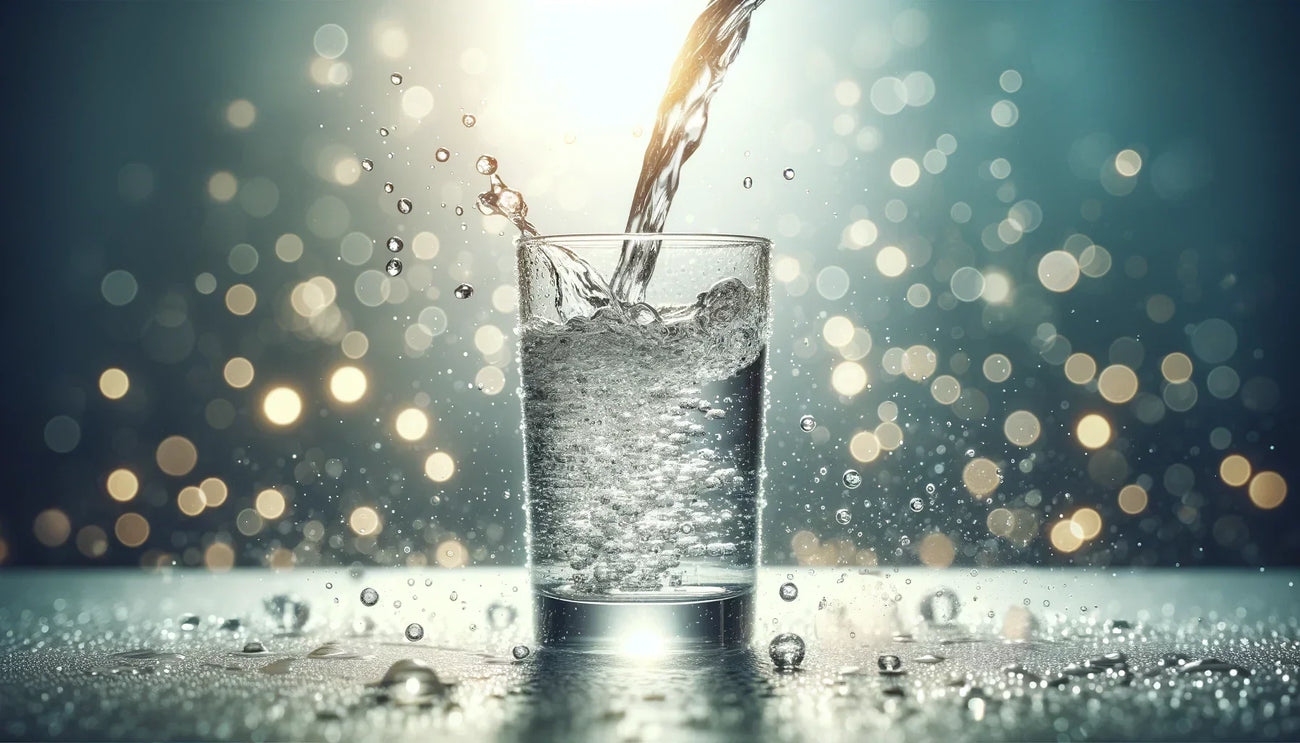
Who invented sparkling water?
The English scientist Joseph Priestley is credited with the invention of sparkling water in 1767. Priestley discovered a method to infuse water with carbon dioxide by suspending a bowl of water above a beer vat at a local brewery, creating a fizzy result that shaped the carbonated water industry.
From its natural presence in mineral springs to its widespread production in the modern beverage industry, sparkling water has undergone significant evolution over time.
In this blog, we'll explore the origins of this effervescent drink, trace its journey across different cultures, and reveal how it became a staple in today's market.
Table of contents:
History of sparkling water starting in ancient beginnings
Key takeaways:
- Sparkling water originates from ancient naturally carbonated springs.
- Greeks and Romans prized its taste and believed in its health benefits.
- Early admiration paved the way for its enduring popularity.
The history of sparkling water can be traced back to ancient times when naturally carbonated water from mineral springs was first discovered and revered.
These springs, found in regions such as present-day Turkey and Germany, produced water with a distinct effervescence due to volcanic activity beneath the earth's surface.
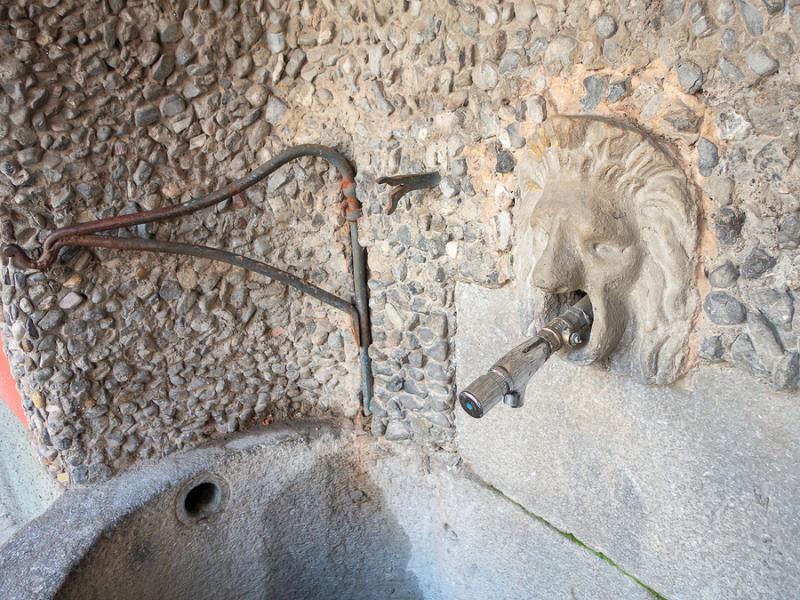
One of Italy's oldest springs / Source: Italy Magazine
Ancient civilizations, including the Greeks and Romans, not only enjoyed the refreshing taste of these natural springs but also believed in their health benefits. They built elaborate bathhouses and spas around these springs, using the mineral-rich, bubbly water for both drinking and therapeutic purposes.
This early admiration laid the groundwork for the development and popularity of sparkling water throughout the centuries.
Sparkling water in the 18th century
Key takeaways:
- Joseph Priestley (1767) pioneered artificial carbonation using fermenting beer.
- Torbern Bergman (1771) developed efficient large-scale carbonation methods.
- Johann Jacob Schweppe (1780s) refined production, founding Schweppe’s Company.
- Physicians endorsed sparkling water for health, increasing its popularity.
Joseph Priestley's discovery
In the 18th century, the evolution of sparkling water took a significant leap forward with the groundbreaking work of Joseph Priestley.
In 1767, while conducting experiments at a brewery in Leeds, England, Priestley discovered that suspending a bowl of water above fermenting beer could infuse the water with carbon dioxide, creating an effervescent effect.
This discovery marked the first time that carbonated water was artificially produced, paving the way for its wider acceptance and usage.
Commercial production begins
Following Priestley's pioneering work, the commercialization of sparkling water began to take shape.
Swedish chemist Torbern Bergman developed an apparatus in 1771 that used sulfuric acid to generate carbon dioxide, which could then be dissolved into water more efficiently. This innovation allowed for the production of carbonated water on a larger scale.
One year later in 1772, Priestly published the article Directions for Impregnating Water with Fixed Air where it's described how dripping sulfuric acid onto chalk can produce a reaction where carbon dioxide is release, and therefore impregnating the agitated water with gas.

Soda Bottling & Carbonation Process / Source: Nova Numismatics
The Swiss watchmaker and amateur scientist, Johann Jacob Schweppe, further refined Priestley’s methods. In the late 1780s, Schweppe developed a process for mass-producing carbonated water using a compression pump.
By 1790, he had established the Schweppe’s Company in Geneva, which later relocated to London due to increasing demand. Schweppe's success in producing and selling carbonated water laid the foundation for the modern beverage industry.
Related read: What is a Carbonator?
Sparkling water in medicine
The medical community of the 18th century also took note of the potential health benefits of sparkling water. Physicians began to recommend carbonated water to treat various ailments, including digestive issues and general fatigue.
This medical endorsement further boosted its popularity and acceptance, especially among those seeking new health treatments.
The 18th century's advancements in the production and popularization of sparkling water laid a crucial foundation for its role in modern culture and its status as an everyday beverage.
The rise of soda fountains
Key takeaways:
- John Matthews revolutionized U.S. sparkling water production in the 1830s.
- In 1834, he invented a soda water apparatus, making carbonation more efficient and affordable.
- His innovations fueled the rise of soda fountains as popular social hubs.
In the early 19th century, as sparkling water began gaining popularity, an English immigrant named John Matthews played a pivotal role in revolutionizing its production and distribution in the United States.
Matthews’ innovations not only improved the carbonation process but also set the stage for the soda fountain culture that swept across America.
Matthews' early innovations
In 1832, John Matthews arrived in the bustling city of New York, driven by a keen interest in the emerging field of carbonated beverages.
By 1834, recognizing the potential of carbonated water, Matthews invented an enhanced soda water apparatus. This innovation allowed for more efficient production of sparkling water, making it more accessible and affordable.
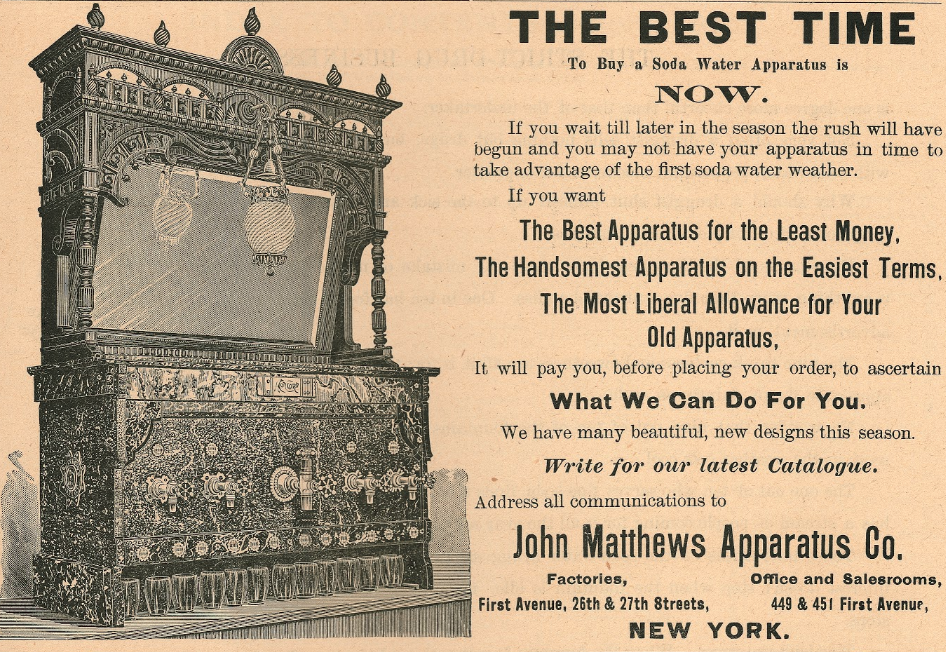
John Matthews Apparatus Co., Ad / Source: RX Insider
Impact on the soda fountain industry
Matthews' apparatus was swiftly embraced by the emerging soda fountain industry, catalyzing the rise of soda fountains as beloved social gathering spots where people could savor an array of carbonated beverages, owing to the enhanced carbonation process.
Matthews founded John Matthews Inc., a flourishing enterprise that produced and marketed soda fountain equipment. His company soon became a leading supplier, ensuring that soda fountains could consistently offer high-quality carbonated drinks.
Legacy of John Matthews
Matthews significantly influenced American culture by making carbonated water more accessible, thereby embedding soda fountains into the fabric of society. These establishments became synonymous with refreshment and social interaction.
Additionally, his technological advancements laid the groundwork for future progress in carbonation technology, shaping the modern soda industry.
Related read: Who Invented Soda Water?
Mainstream popularity of carbonated beverages
As the 20th century dawned, sparkling water witnessed a surge in mainstream popularity, fueled by innovations in bottling technology and marketing strategies.
The advent of reliable glass and plastic bottles, along with advanced carbonation techniques, made it easier and more economical for manufacturers to produce and distribute sparkling water on a massive scale.
The early 20th century saw the rise of the soft drink industry. Companies like Coca-Cola and Pepsi-Cola began producing flavored carbonated beverages, which became immensely popular worldwide.
Sparkling water itself remained popular both as a standalone drink and as a mixer for alcoholic beverages.
The bottled water industry began to expand significantly in the latter half of the 20th century. Brands like Perrier, San Pellegrino, and later LaCroix capitalized on the growing health and wellness trend by offering sparkling water as a calorie-free, refreshing alternative to sugary soft drinks.
There is also a growing emphasis on sustainability within the sparkling water industry. Companies are increasingly focusing on eco-friendly packaging and promoting the use of reusable bottles, refillable CO2 canisters, and home carbonation systems like Soda Sense, Drinkmate, and Aarke.

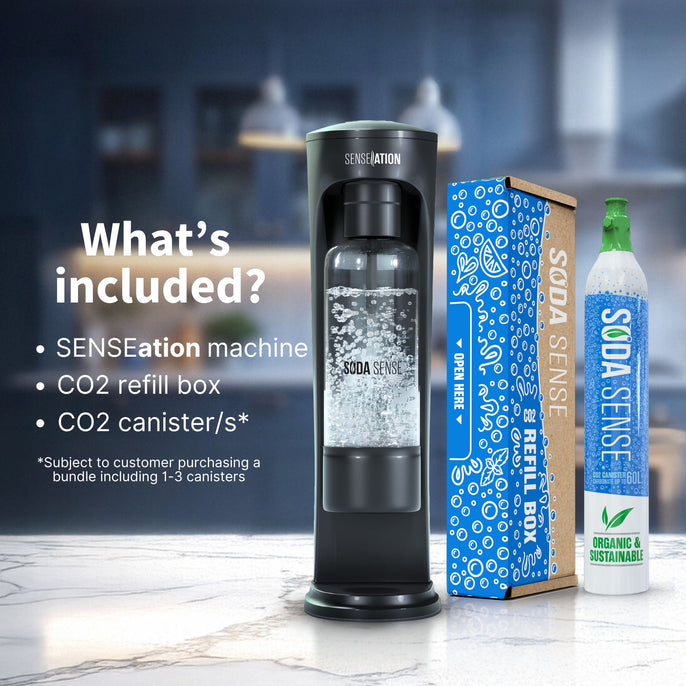
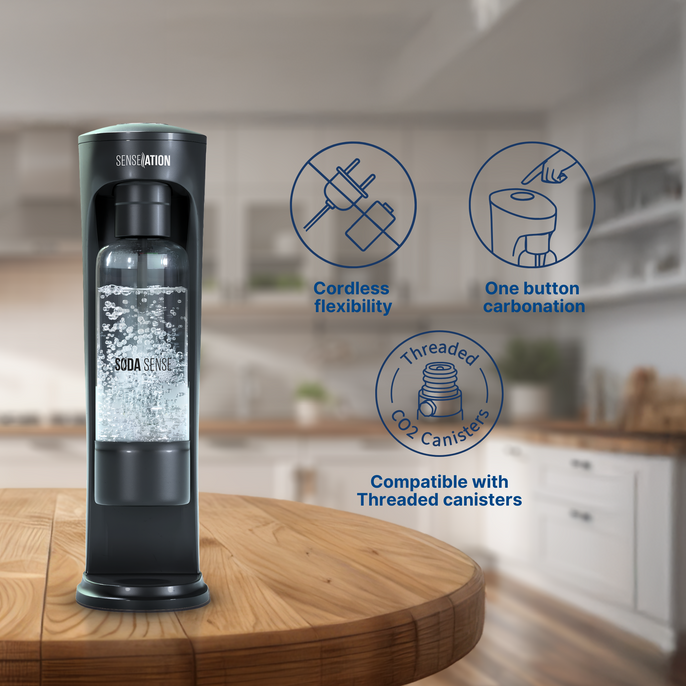
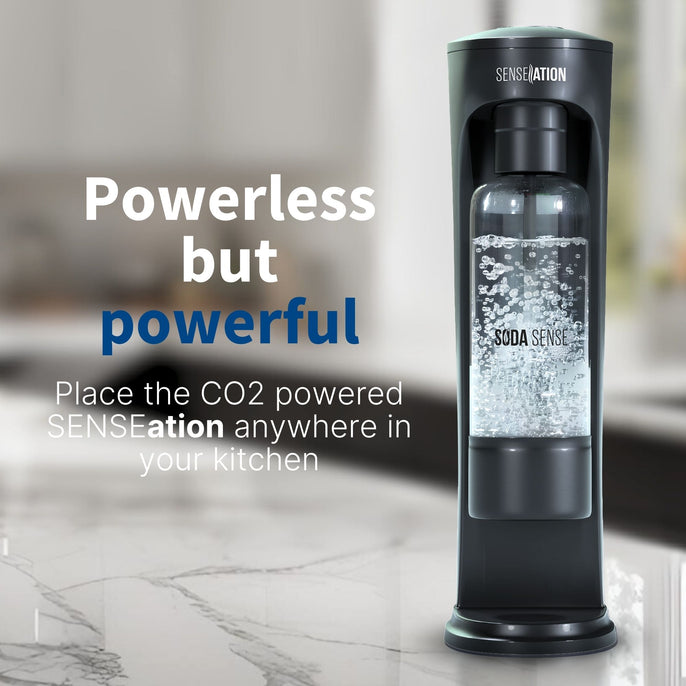
The SENSEation Sparkling Water Maker
Related read: The Origin of Tonic Water
Evolution of the phrase carbonated water
The evolution of fizzy drinks, and the terminology associated with them, is a tale of innovation, cultural influence, and branding. The term "carbonated water" broadly refers to water that has been infused with carbon dioxide gas under pressure.
The terms used for carbonated water have evolved alongside its history. Initially, the term "aerated water" was used in the 18th century following Joseph Priestley's discovery.
As the beverage became more popular, it began to be known by various names depending on regional and branding preferences such as:
- Sparkling Water: Often used to describe naturally carbonated water or artificially carbonated water that offers a light, refreshing taste without added flavors. Brands like San Pellegrino and Perrier epitomize this category.
- Soda Water: A term that became popular in the 19th century, often used interchangeably with sparkling water in the United States. Soda water usually refers to carbonated water with added minerals to enhance flavor, such as bicarbonate soda.
- Seltzer Water: Originating from the German town of Selters, which was known for its natural springs, seltzer water was initially referred to as natural mineral water. Today, it often denotes plain carbonated water without added minerals or flavors.
- Club Soda: A term popularized in the 20th century in the United Kingdom and the United States that specifically refers to carbonated water with added minerals like sodium bicarbonate and potassium sulfate. This slight mineral content distinguishes it from seltzer and sparkling water.
Summary
The journey of carbonated water from its humble beginnings in the 18th century to its contemporary status as a popular beverage is a testament to human innovation and adaptability.
From Joseph Priestley’s initial experimentations to the burgeoning soft drink industry and the emphasis on sustainability and health in modern times, carbonated water has continually evolved to meet the needs and preferences of consumers.
It remains a beloved drink, cherished for its refreshing quality and versatility. As the demand for healthier and more sustainable options grows, the sparkling water industry is poised to continue its dynamic development, further solidifying its place in the global beverage culture.
Recommended reading

How to Give Back During Thanksgiving 2025
Key takeaways Thanksgiving is a time to express gratitude and share with those in need. From volunteering at local shelters to donating food and essentials, there are numerous ways to give back to...
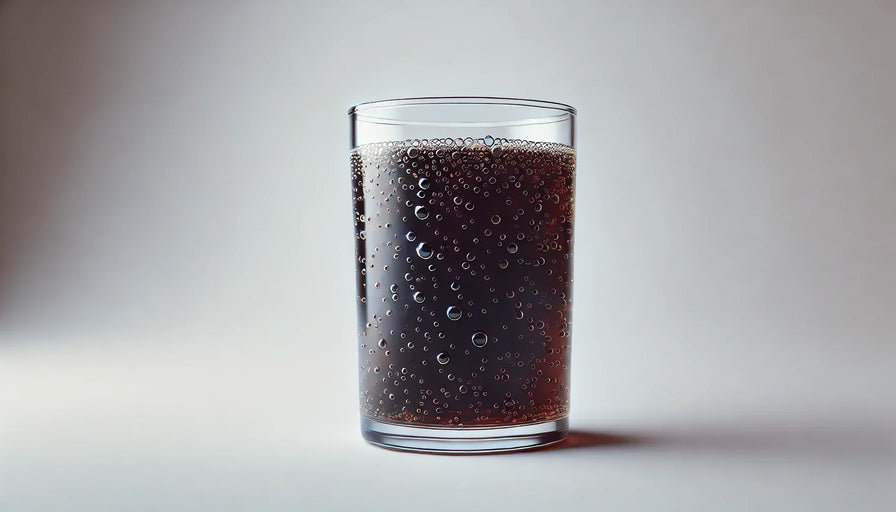
What Does Carbonation Do to Your Body?
What does carbonation do to your body? Carbonation alone typically has minimal effects; however, it can cause bloating and discomfort for some, and it may worsen acid reflux due to carbon dioxide ...

What Are the Health Benefits of Sparkling Water?
Summary Sparkling water isn't just a refreshing drink—it comes with surprising health benefits too. From aiding digestion to improving hydration, discover how sparkling water can be a healthy addi...